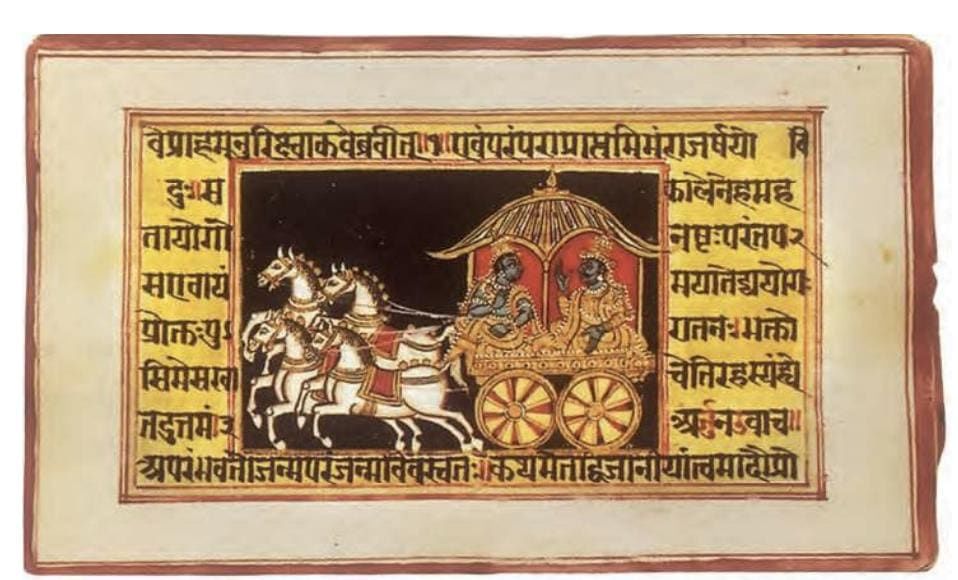Test: Devotional Paths to The Divine - Class 7 MCQ
20 Questions MCQ Test Social Studies (SST) Class 7 - Test: Devotional Paths to The Divine
Identify from which manuscript the below figure is taken.


Which deities were came to be worshipped through elaborate rituals
Who was born in Tamil Nadu in the eleventh century, was deeply influenced by the Alvars ?
Why did Mirabai leave Rana's palace according to the song she composed?
How were these compositions transmitted through generations, and what role did marginalized communities play in their preservation?
What did Ramanuja believe was the best way to attain salvation?
What was the main focus of the saint-poets like Dnyaneshwar, Namdev, and Tukaram in Maharashtra?
What is the temple that Basavanna is offering to God?
State whether the following statement is True or False
Chokhamela's son composed an abhang questioning the social order.
State whether the following statement is True or False:
Jalaluddin Rumi was a poet from Iran.
Who compiled the compositions of Baba Guru Nanak and added his own to create a new script known as Gurmukhi?
State whether the following statement is True or False
Baba Guru Nanak appointed Lehna as his successor, who later became known as Guru Angad.
|
61 videos|340 docs|46 tests
|


















